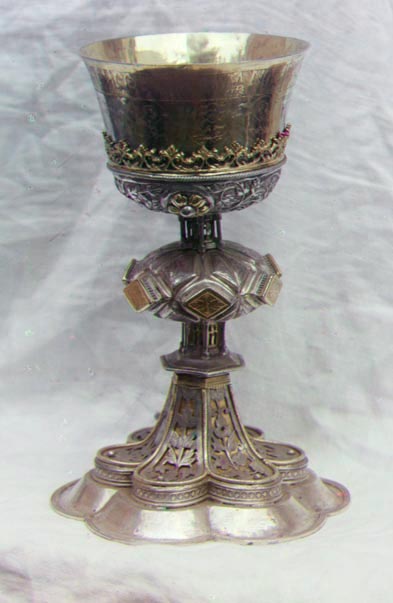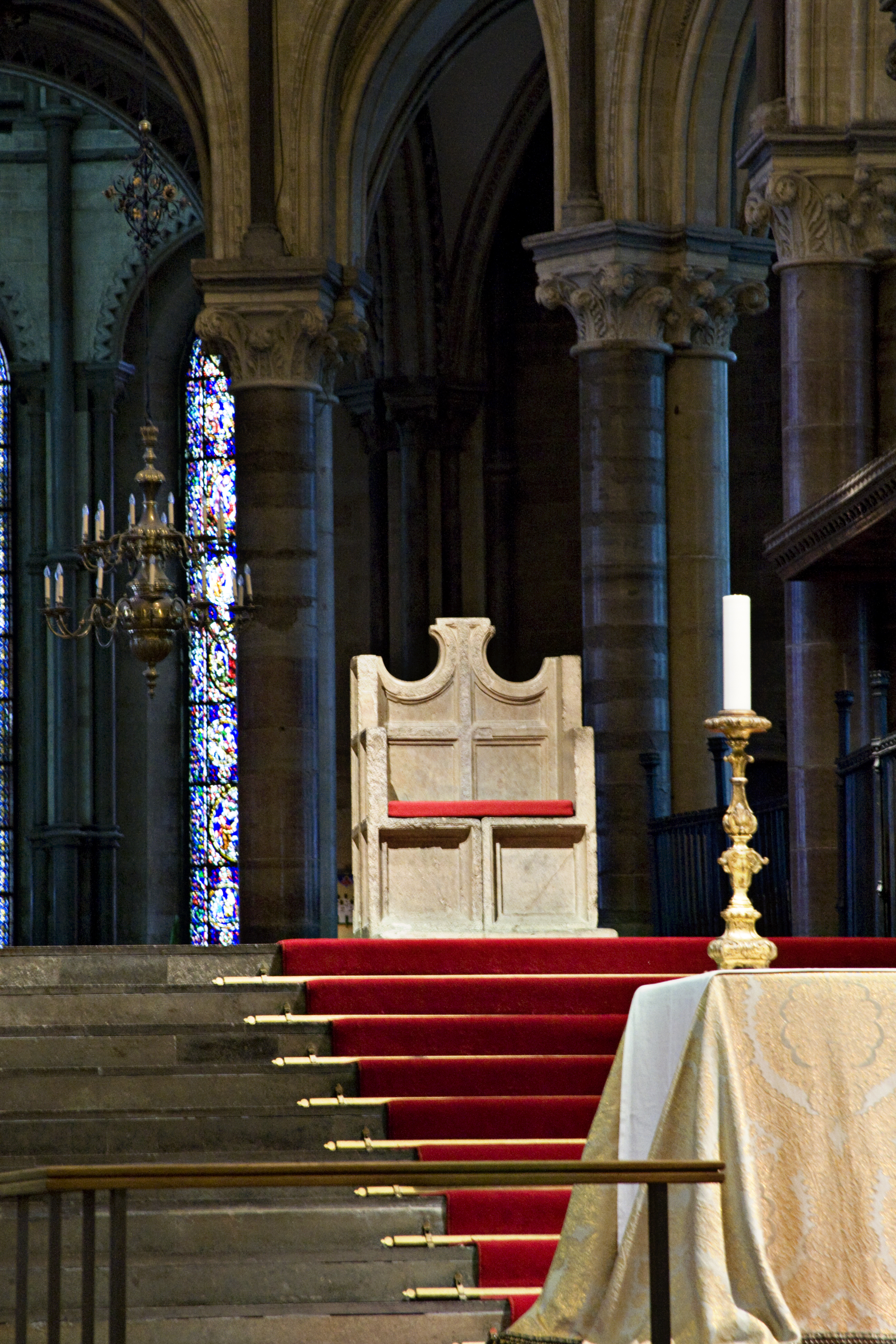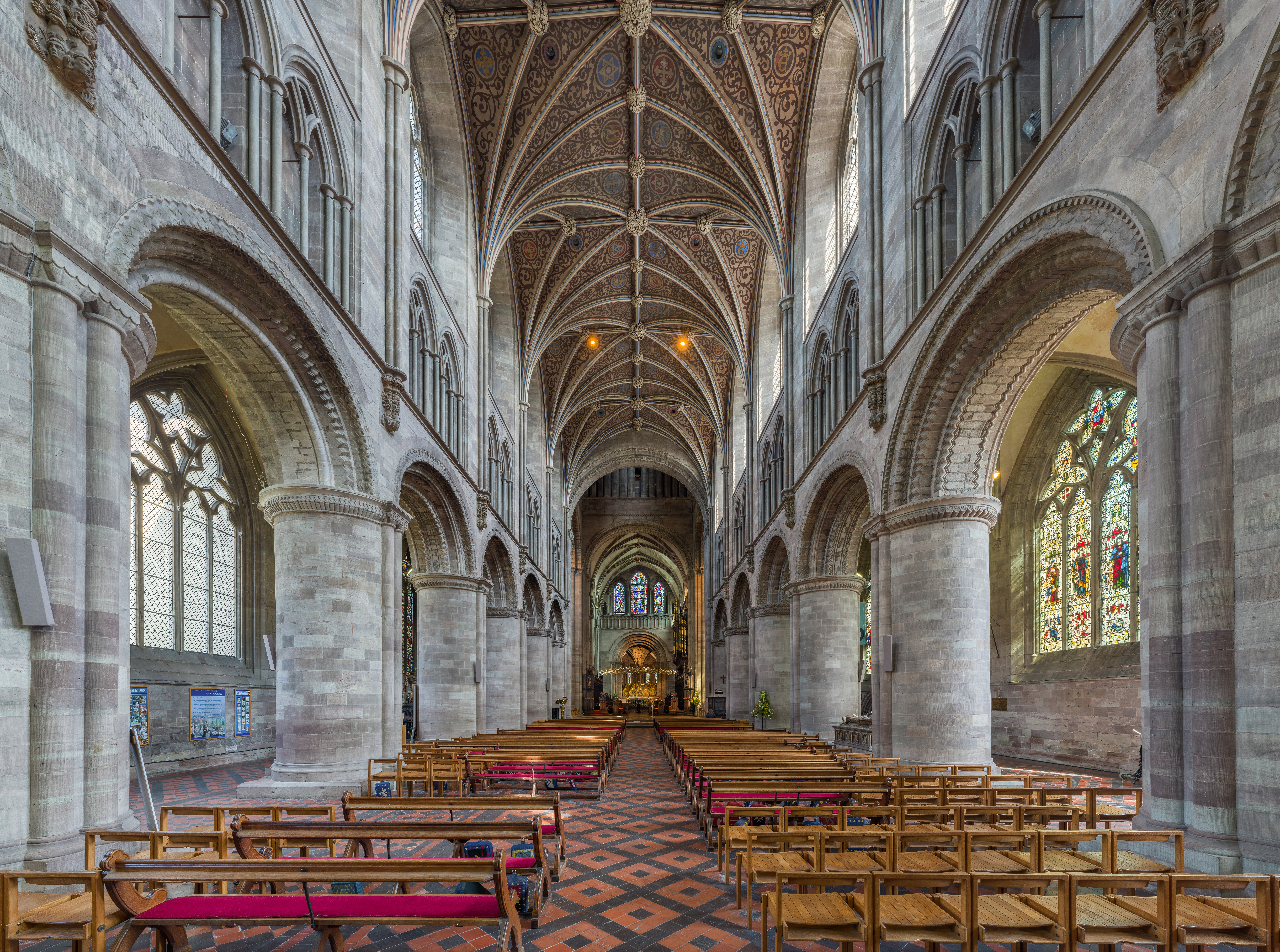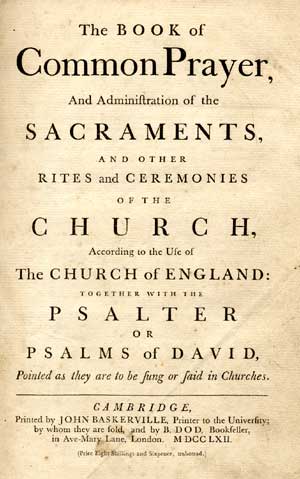|
Offertory
The offertory (from Medieval Latin ''offertorium'' and Late Latin ''offerre'') is the part of a Eucharistic service when the bread and wine for use in the service are ceremonially placed on the altar. A collection of alms (offerings) from the congregation, which may take place also at non-Eucharistic services, often coincides with this ceremony. The Eucharistic theology may vary among those Christian denominations that have a liturgical offertory. In the Roman Rite, the term "Preparation of the Gifts" is used in addition to the term "Offertory" (both capitalized) or, rather, the term "Preparation of the Gifts" is used for the action of the priest, while the term "Offertory" is used for the section of the Mass at which this action is performed in particular when speaking of the accompanying chant. In Baptist churches, the offertory refers to the part of the service of worship in which collection plates or baskets are distributed by ushers, with the tithes and offerings s ... [...More Info...] [...Related Items...] OR: [Wikipedia] [Google] [Baidu] |
Tridentine Mass
The Tridentine Mass, also known as the Traditional Latin Mass or Traditional Rite, is the liturgy of Mass in the Roman Rite of the Catholic Church that appears in typical editions of the Roman Missal published from 1570 to 1962. Celebrated almost exclusively in Ecclesiastical Latin, it was the most widely used Eucharistic liturgy in the world from its issuance in 1570 until the introduction of the Mass of Paul VI (promulgated in 1969, with the revised Roman Missal appearing in 1970). The edition promulgated by Pope John XXIII in 1962 (the last to bear the indication ''ex decreto Sacrosancti Concilii Tridentini restitutum'') and Mass celebrated in accordance with it are described in the 2007 motu proprio '' Summorum Pontificum'' as an authorized form of the Church's liturgy, and sometimes spoken of as the Extraordinary Form, or the ''usus antiquior'' ("more ancient usage" in Latin). "Tridentine" is derived from the Latin ''Tridentinus'', "related to the city of Tridentum" (m ... [...More Info...] [...Related Items...] OR: [Wikipedia] [Google] [Baidu] |
Alms
Alms (, ) are money, food, or other material goods donated to people living in poverty. Providing alms is often considered an act of virtue or charity. The act of providing alms is called almsgiving, and it is a widespread practice in a number of different religions and cultures. Etymology The word ''alms'' comes from the Old English ', ', which comes from Late Latin ', from Greek ' ("pity, alms"), from , ' ("merciful"), from , ', meaning "pity or mercy". Buddhism ''Dāna'' in Buddhism In Buddhism, both "almsgiving" and "giving" are called "dāna" (Pāli). Such giving is one of the three elements of the path of practice as formulated by the Buddha for laypeople. This path of practice for laypeople is dāna, sīla, and bhāvanā. Generosity towards other sentient beings is also emphasized in Mahayana as one of the perfections ( paramita). As shown in Lama Tsong Khapa's 'The Abbreviated Points of the Graded Path' (): The giving of alms is the beginning of one's jou ... [...More Info...] [...Related Items...] OR: [Wikipedia] [Google] [Baidu] |
Chalice
A chalice (from Latin 'mug', borrowed from Ancient Greek () 'cup') or goblet is a footed cup intended to hold a drink. In religious practice, a chalice is often used for drinking during a ceremony or may carry a certain symbolic meaning. Religious use Christian The ancient Roman ''calix'' was a drinking vessel consisting of a bowl fixed atop a stand, and was in common use at banquets. In Roman Catholicism, Eastern Orthodox Church, Oriental Orthodoxy, Anglicanism, Lutheranism and some other Christian denominations, a chalice is a standing cup used to hold sacramental wine during the Eucharist (also called the Lord's Supper or Holy Communion). Chalices are often made of precious metal, and they are sometimes richly enamelled and jewelled. The gold goblet was symbolic for family and tradition. Chalices have been used since the early church. Because of Jesus' command to his disciples to "Do this in remembrance of me." (), and Paul's account of the Eucharistic rite in , ... [...More Info...] [...Related Items...] OR: [Wikipedia] [Google] [Baidu] |
Solemn Mass
Solemn Mass ( la, missa solemnis) is the full ceremonial form of a Mass, predominantly associated with the Tridentine Mass where it is celebrated by a priest with a deacon and a subdeacon,"The essence of high Mass is not the music but the deacon and subdeacon."Catholic Encyclopedia: ''Liturgy of the Mass'')./ref> requiring most of the parts of the Mass to be sung, and the use of incense. It is also called High Mass or Solemn High Mass. These terms distinguish it from a Low Mass and Missa Cantata. The parts assigned to the deacon and subdeacon are often performed by priests in vestments proper to those roles. A Solemn Mass celebrated by a bishop has its own particular ceremonies and is referred to as a Solemn Pontifical Mass. Within the Roman Rite, the history of the Solemn Mass has been traced to the 7th century in the Gregorian Sacramentary and '' Ordo Romanus Primus'', followed by several centuries of adapting these pontifical liturgies. Eventually, the proliferation of ... [...More Info...] [...Related Items...] OR: [Wikipedia] [Google] [Baidu] |
Divine Liturgy
Divine Liturgy ( grc-gre, Θεία Λειτουργία, Theia Leitourgia) or Holy Liturgy is the Eucharistic service of the Byzantine Rite, developed from the Antiochene Rite of Christian liturgy which is that of the Ecumenical Patriarchate of Constantinople. As such, it is used in the Eastern Orthodox, the Greek Catholic Churches, and the Ukrainian Lutheran Church. Although the same term is sometimes applied in English to the Eucharistic service of Armenian Christians, both of the Armenian Apostolic Church and of the Armenian Catholic Church, they use in their own language a term meaning "holy offering" or "holy sacrifice". Other churches also treat "Divine Liturgy" simply as one of many names that can be used, but it is not their normal term. The Greek Catholic and Orthodox Churches see the Divine Liturgy as transcending time and the world. All believers are seen as united in worship in the Kingdom of God along with the departed saints and the angels of heaven. Everythi ... [...More Info...] [...Related Items...] OR: [Wikipedia] [Google] [Baidu] |
Mass (liturgy)
Mass is the main Eucharistic liturgy, liturgical service in many forms of Western Christianity. The term ''Mass'' is commonly used in the Catholic Church, in the Western Rite Orthodoxy, Western Rite Orthodox, in Old Catholic Church, Old Catholic, and in Independent Catholic churches. The term is used in some Lutheranism, Lutheran churches, as well as in some Anglicanism, Anglican churches. The term is also used, on rare occasion, by other Protestant churches. Other Christian denominations may employ terms such as ''Divine Service (Lutheran), Divine Service'' or ''service of worship, worship service'' (and often just "service"), rather than the word ''Mass''. For the celebration of the Eucharist in Eastern Christianity, including Eastern Catholic Churches, other terms such as ''Divine Liturgy'', ''Holy Qurbana'', ''Holy Qurobo'' and ''Badarak'' (or ''Patarag'') are typically used instead. Etymology The English noun ''mass'' is derived from the Middle Latin . The Latin word was ... [...More Info...] [...Related Items...] OR: [Wikipedia] [Google] [Baidu] |
Dominican Rite
The Dominican Rite is the unique rite of the Dominican Order of the Roman Catholic Church. It has been classified differently by different sources – some consider it a usage of the Roman Rite, others a variant of the Gallican Rite, and still others a form of the Roman Rite into which Gallican elements were inserted. The Dominican Order composed and adopted this rite in the mid-thirteenth century as its specific rite. In 1968, it decided to adopt the revised Roman Rite of Mass and of the Divine Office, as soon as the texts revised after the Second Vatican Council appeared, but it has kept other elements of its proper rite, such as the Rite of Profession. As a result, the Dominican Rite of the Mass ceased being celebrated as often after the revised Roman Rite was promulgated. However, in recent decades it has been offered occasionally in some provinces of the Dominican Order, and regularly in others. In addition, it is offered by the Traditionalist Roman Catholic Dominican F ... [...More Info...] [...Related Items...] OR: [Wikipedia] [Google] [Baidu] |
Medieval Latin
Medieval Latin was the form of Literary Latin Classical Latin is the form of Literary Latin recognized as a Literary language, literary standard language, standard by writers of the late Roman Republic and early Roman Empire. It was used from 75 BC to the 3rd century AD, when it developed ... used in Roman Catholic Western Europe during the Middle Ages. In this region it served as the primary written language, though local languages were also written to varying degrees. Latin functioned as the main medium of scholarly exchange, as the liturgical language of the Roman Catholic Church, Church, and as the working language of science, literature, law, and administration. Medieval Latin represented a continuation of Classical Latin and Late Latin, with enhancements for new concepts as well as for the increasing integration of Christianity. Despite some meaningful differences from Classical Latin, Medieval writers did not regard it as a fundamentally different language. There i ... [...More Info...] [...Related Items...] OR: [Wikipedia] [Google] [Baidu] |
Anglican Communion
The Anglican Communion is the third largest Christian communion after the Roman Catholic and Eastern Orthodox churches. Founded in 1867 in London, the communion has more than 85 million members within the Church of England and other autocephalous national and regional churches in full communion. The traditional origins of Anglican doctrine are summarised in the Thirty-nine Articles (1571). The Archbishop of Canterbury (, Justin Welby) in England acts as a focus of unity, recognised as ' ("first among equals"), but does not exercise authority in Anglican provinces outside of the Church of England. Most, but not all, member churches of the communion are the historic national or regional Anglican churches. The Anglican Communion was officially and formally organised and recognised as such at the Lambeth Conference in 1867 in London under the leadership of Charles Longley, Archbishop of Canterbury. The churches of the Anglican Communion consider themselves to be p ... [...More Info...] [...Related Items...] OR: [Wikipedia] [Google] [Baidu] |
Church Of England
The Church of England (C of E) is the established Christian church in England and the mother church of the international Anglican Communion. It traces its history to the Christian church recorded as existing in the Roman province of Britain by the 3rd century and to the 6th-century Gregorian mission to Kent led by Augustine of Canterbury. The English church renounced papal authority in 1534 when Henry VIII of England, Henry VIII failed to secure a papal annulment of his marriage to Catherine of Aragon. The English Reformation accelerated under Edward VI of England, Edward VI's regents, before a brief Second Statute of Repeal, restoration of papal authority under Mary I of England, Queen Mary I and Philip II of Spain, King Philip. The Act of Supremacy 1558 renewed the breach, and the Elizabethan Settlement charted a course enabling the English church to describe itself as both English Reformation, Reformed and Catholicity, Catholic. In the earlier phase of the Eng ... [...More Info...] [...Related Items...] OR: [Wikipedia] [Google] [Baidu] |
Book Of Common Prayer (1662)
The 1662 ''Book of Common Prayer'' is an authorised liturgical book of the Church of England and other Anglican bodies around the world. In continuous print and regular use for over 360 years, the 1662 prayer book is the basis for numerous other editions of the ''Book of Common Prayer'' and other liturgical texts. Noted for both its devotional and literary quality, the 1662 prayer book has influenced the English language, with its devotional use alongside the King James Version of the Bible contributing to an increase in literacy from the 16th to the 20th century. As a Christian liturgy, the 1662 prayer book has had a profound impact on Christian spirituality and ritual. Its contents have inspired or been adapted by many Christian movements spanning multiple traditions both within and outside the Anglican Communion, including Anglo-Catholicism, Methodism, Western Rite Orthodoxy, and Unitarianism. Due to its dated language and lack of specific offices for modern life, the 1662 ... [...More Info...] [...Related Items...] OR: [Wikipedia] [Google] [Baidu] |
Low Mass
Low Mass (Latin ''Missa lecta'', "read Mass") is a Tridentine Mass defined officially in the Code of Rubrics included in the 1962 edition of the Roman Missal as a Mass in which the priest does not chant the parts that the rubrics assign to him. A sung Mass celebrated with the assistance of sacred ministers (deacon and subdeacon) is a High or Solemn Mass; without them it is a '' Missa Cantata''. History Low Mass originated in the early Middle Ages as a shortened or simplified form of Solemn Mass. In the early church, as in the Orthodox church today, all services were chanted, and there was no equivalent to the Roman Low Mass or to the Anglican "said celebration". Masses without solemnity in early Christianity Alongside the public solemn Masses, the practice developed from the 4th century onwards, of smaller private Masses for smaller groups of believers. These masses were often celebrated in the catacombs, for the deceased or on a special anniversary. An example is provided by Sa ... [...More Info...] [...Related Items...] OR: [Wikipedia] [Google] [Baidu] |










